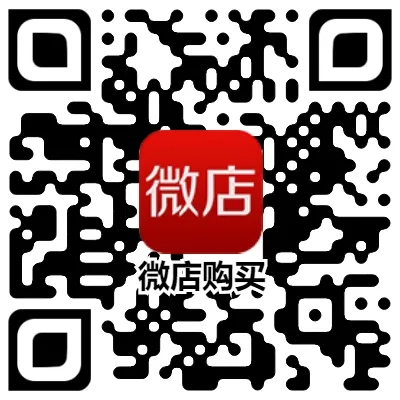| 1 |
BAIG M I, YADEGARIDEHKORDI E. ChatGPT in the higher education: A systematic literature review and research challenges[J]. International journal of educational research, 2024, 127: 102411.
|
| 2 |
RAWAS S. ChatGPT: Empowering lifelong learning in the digital age of higher education[J]. Education and information technologies, 2024, 29(6): 6895-6908.
|
| 3 |
RAJABI P, TAGHIPOUR P, CUKIERMAN D, et al. Exploring ChatGPT's impact on post-secondary education: A qualitative study[C]//Proceedings of the 25th Western Canadian Conference on Computing Education. New York: ACM, 2023: 1–6.
|
| 4 |
TIERNAN P, COSTELLO E, DONLON E, et al. Information and media literacy in the age of AI: Options for the future[J]. Education sciences, 2023, 13(9): 906.
|
| 5 |
宰冰欣, 叶兰, 林伟明, 等. AIGC背景下国内外高校图书馆AI素养教育实践模式研究——基于对60所世界一流高校图书馆的调研[J/OL]. 图书馆杂志, 2024: 1-17.
|
|
ZAI B X, YE L, LIN W M, et al. Research on AI literacy education practice models in university libraries in the context of AIGC - Based on the investigation of 60 world-class university libraries[J/OL]. Library journal, 2024: 1-17.
|
| 6 |
KONG S C, KORTE S M, BURTON S, et al. Artificial Intelligence (AI) literacy–An argument for AI literacy in education[J]. Innovations in education and teaching international, 2024: 1-7.
|
| 7 |
YUMI Y. Establishing the concept of AI literacy: Focusing on competence and purpose[J]. Jahr: Europski časopis za bioetiku, 2021, 12(2): 353-368.
|
| 8 |
LUCKIN R, CUKUROVA M, KENT C, et al. Empowering educators to be AI-ready[J]. Computers and education: Artificial intelligence, 2022, 3: 100076.
|
| 9 |
吴瑕碧, 严丹, 蔡迎春. 基于ARCS模型的AI素养教育创新实践[J/OL]. 图书馆杂志, 2024: 1-12.
|
|
WU X B, YAN D, CAI Y C. Innovative practice of AI literacy education based on the ARCS model[J/OL]. Library journal, 2024: 1-12.
|
| 10 |
郭亚军, 寇旭颍, 冯思倩, 等. 人工智能素养: 内涵剖析与评估标准构建[J/OL]. 图书馆论坛, 2024: 1-9.
|
|
GUO Y J, KOU X Y, FENG S Q, et al. Artificial intelligence literacy: Connotation analysis and evaluation criteria construction[J/OL]. Library tribune, 2024: 1-9.
|
| 11 |
LONG D R, MAGERKO B. What is AI literacy? Competencies and design considerations[C]//Proceedings of the 2020 CHI Conference on Human Factors in Computing Systems. New York: ACM, 2020: 1-16.
|
| 12 |
钟柏昌, 刘晓凡, 杨明欢. 何谓人工智能素养: 本质、构成与评价体系[J]. 华东师范大学学报(教育科学版), 2024, 42(1): 71-84.
|
|
ZHONG B C, LIU X F, YANG M H. What is artificial intelligence(AI) competency: Essence, composition and evaluation systems[J]. Journal of East China normal university (educational sciences), 2024, 42(1): 71-84.
|
| 13 |
蔡迎春, 张静蓓, 虞晨琳, 等. 数智时代的人工智能素养: 内涵、框架与实施路径[J]. 中国图书馆学报, 2024, 50(4): 71-84.
|
|
CAI Y C, ZHANG J B, YU C L, et al. Artificial intelligence literacy in the digital intelligence era: Connotation, framework, and implementation pathways[J]. Journal of library science in China, 2024, 50(4): 71-84.
|
| 14 |
DAI Y, CHAI C S, LIN P Y, et al. Promoting students' well-being by developing their readiness for the artificial intelligence age[J]. Sustainability, 2020, 12(16): 6597.
|
| 15 |
张银荣, 杨刚, 徐佳艳, 等. 人工智能素养模型构建及其实施路径[J]. 现代教育技术, 2022, 32(3): 42-50.
|
|
ZHANG Y R, YANG G, XU J Y, et al. The cultivation of AI literacy model and its implementation path[J]. Modern educational technology, 2022, 32(3): 42-50.
|
| 16 |
WONG G K W, MA X J, DILLENBOURG P, et al. Broadening artificial intelligence education in K-12[J]. ACM inroads, 2020, 11(1): 20-29.
|
| 17 |
杨鸿武, 张笛, 郭威彤. STEM背景下人工智能素养框架的研究[J]. 电化教育研究, 2022, 43(4): 26-32.
|
|
YANG H W, ZHANG D, GUO W T. A study of literacy framework of artificial intelligence in STEM context[J]. E-education research, 2022, 43(4): 26-32.
|
| 18 |
OECD. Future of education and skills 2030: Conceptual learning framework-education and AI: Preparing for the future & AI, attitudes and values[EB/OL]. [2024-05-19].
|
| 19 |
NG D T K, WU W J, LEUNG J K L, et al. Design and validation of the AI literacy questionnaire: The affective, behavioural, cognitive and ethical approach[J]. British journal of educational technology, 2024, 55(3): 1082-1104.
|
| 20 |
陈凯泉, 何瑶, 仲国强. 人工智能视域下的信息素养内涵转型及AI教育目标定位——兼论基础教育阶段AI课程与教学实施路径[J]. 远程教育杂志, 2018, 36(1): 61-71.
|
|
CHEN K Q, HE Y, ZHONG G Q. The transformation of information literacy connotation in artificial intelligence(AI) perspective and target positioning of artificial intelligence(AI) education: Also on the implementation path of artificial intelligence course and teaching in basic educat[J]. Journal of distance education, 2018, 36(1): 61-71.
|
| 21 |
施雨, 茆意宏. 人工智能素养的概念、框架与教育[J/OL]. 图书馆论坛, 2024: 1-12.
|
|
SHI Y, MAO Y H. The concept, framework and education of artificial intelligence literacy[J/OL]. Library tribune, 2024: 1-12.
|
| 22 |
张静蓓, 虞晨琳, 蔡迎春. 人工智能素养教育: 全球进展与展望[J]. 图书情报知识, 2024, 41(3): 15-26.
|
|
ZHANG J B, YU C L, CAI Y C. Artificial intelligence literacy education: Global progress and prospects[J]. Documentation, information & knowledge, 2024, 41(3): 15-26.
|
| 23 |
龚芙蓉. ChatGPT类生成式AI对高校图书馆数字素养教育的影响探析[J]. 图书情报知识, 2023, 40(5): 97-106, 156.
|
|
GONG F R. The impact of generative AI like ChatGPT on digital literacy education in university libraries[J]. Documentation, information & knowledge, 2023, 40(5): 97-106, 156.
|
| 24 |
教育部高等教育司. 教育部高等教育司关于公布首批“人工智能+高等教育”应用场景典型案例的通知[EB/OL]. [2024-05-19].
|
| 25 |
曹培杰. 智慧教育: 人工智能时代的教育变革[J]. 教育研究, 2018, 39(8): 121-128.
|
|
CAO P J. Smart education: The educational reform at the age of artificial intelligence[J]. Educational research, 2018, 39(8): 121-128.
|
| 26 |
曾红宇, 颜家水, 叶奕. 人工智能背景下传媒专业课程教学“泛在化”创新策略[J]. 传媒, 2021(22): 91-93.
|
|
ZENG H Y, YAN J S, YE Y. Innovative strategies of ubiquitous teaching of media major under the background of artificial intelligence[J]. Media, 2021(22): 91-93.
|
| 27 |
尹开国. 人工智能素养: 提出背景、概念界定与构成要素[J]. 图书与情报, 2024(3): 60-68.
|
|
YIN K G. AI literacy: Background, conceptual definition, and constituent elements[J]. Library & information, 2024(3): 60-68.
|
| 28 |
NG D T K, LEUNG J K L, CHU S K W, et al. Conceptualizing AI literacy: An exploratory review[J]. Computers and education: Artificial intelligence, 2021, 2: 100041.
|
| 29 |
KORKMAZ Ö, ÇAKIR R, ÖZDEN M Y. A validity and reliability study of the computational thinking scales (CTS)[J]. Computers in human behavior, 2017, 72: 558-569.
|
| 30 |
GOLD N E. Responsible artificial intelligence: How to develop and use AI in a responsible way[J]. Genetic programming and evolvable machines, 2021, 22(1): 137-139。
|
| 31 |
AYANWALE M A, ADELANA O P, MOLEFI R R, et al. Examining artificial intelligence literacy among pre-service teachers for future classrooms[J]. Computers and education open, 2024, 6: 100179.
|
| 32 |
JOBIN A, IENCA M, VAYENA E. The global landscape of AI ethics guidelines[J]. Nature machine intelligence, 2019, 1: 389-399.
|
| 33 |
FLOGIE A, KRABONJA M V. Artificial intelligence in education: Developing competencies and supporting teachers in implementing AI in school learning environments[C]//2023 12th Mediterranean Conference on Embedded Computing (MECO). Piscataway, New Jersey: IEEE, 2023: 1-6.
|
| 34 |
张静蓓, 徐亚苹, 周琼, 等. 未来学习中心建设:图书馆的角色定位、功能重塑及实践探索[J]. 农业图书情报学报, 2023, 35(6): 43-50.
|
|
ZHANG J B, XU Y P, ZHOU Q, et al. Future learning centers: A study on libraries' role reorientation, function reconstruction, and practical innovations[J]. Journal of library and information science in agriculture, 2023, 35(6): 43-50.
|




